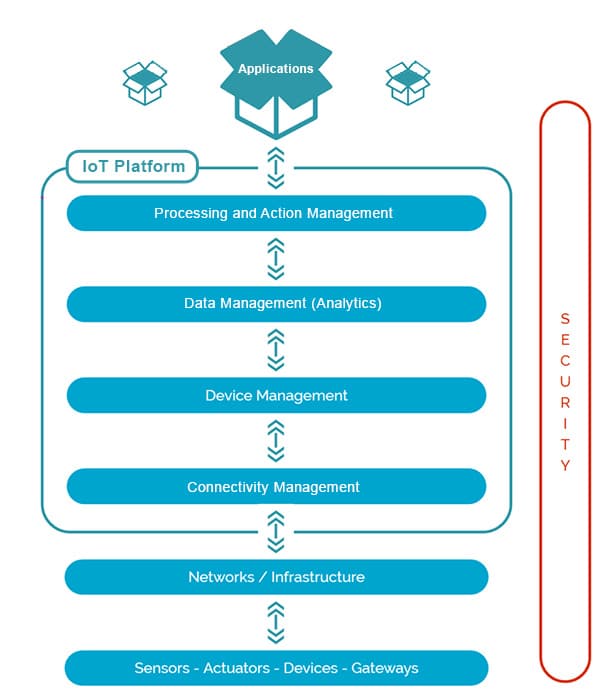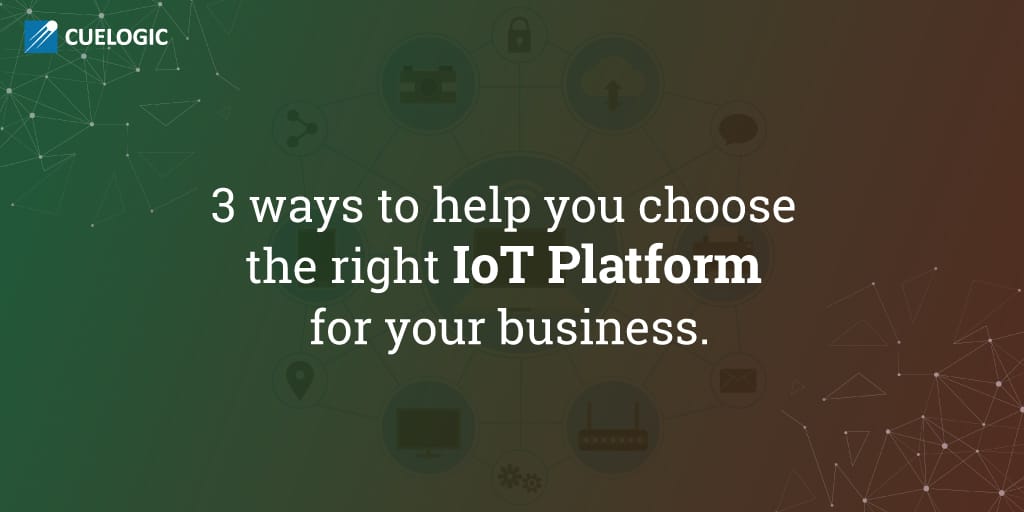IoT and IoT platforms have set the world of internet abuzz. However before we dive in deeper, let’s understand IoT.
The internet has been around us for quite some time now, but it has always been a thing of people i.e it was by people, for people and around people.
But there’s a new avenue of internet growing fast and it’s not only about connecting people but also about connecting things and hence it’s called internet of things (IoT).
What is an IoT platform?
The purpose of IoT device is to transfer information with other IoT devices or applications using internet transfer protocols and this gap between device and data network is filled by an IoT platform.
The platform connects the data network with the device and provides valuable insights using backend application.
Connecting things to the internet is not like connecting laptop to internet, you need a data system to move, understand traffic, record data and a messaging system that will let you know when an event occurs.
For instance, your alarm clock will wake you an hour early when it’s raining or there is increase in traffic on your route so you can reach your morning meeting on time.
There can be issues with this system such as issues with device, protocol, compatibility or scaling of the application and all this can get difficult & expensive, if you don’t choose correct platform and architecture for your IoT application.
Components of an IoT platform

- Device Management
This component helps to monitor and manage health of devices in your IoT deployment.
The IoT platform should maintain a list of connected devices to it and track their operation status; it should be able to handle configuration, firmware updates and provide device level error reporting and error handling.
- Standardization and Connectivity
These are the protocols used for data communication between the IoT devices and platform. The protocols define how well your platform can interact with the Iot devices.
Your platform can interact only with those devices which communicate with same standards and protocols. MQTT is the protocol which is used for machine to machine/”Internet of Things” communication.
It is useful for connections with remote locations where a small code footprint is required and/or network bandwidth is at a premium.
- Processing and Action Management
This component is the rule engine that defines the rules for what actions should be taken based on data from device sensors. For example, your room lights should automatically go off at a certain time which is predefined by a rule in IoT platform.
- Data Management and Analytics
A lot of data is continuously received from the device sensors which can be analysed for prediction. With additional data sources such as weather and social data, IoT platform can provide a better insights of data captured. Cloud Migration of data in this instance helps a lot to speed up, secure and save costs.
These insights will drive digital disruption of the physical world, business processes and real-time decision-making.
- Risk and Security Management Millions of device connects with your Iot platform, so the number of vulnerabilities/threats are also proportional.This component authorizes each request and response from and to the IoT device and thus provides security to the platform.
Which IOT platform for your solution ?
In order to build a good IoT enabled solution, choosing the IoT platform is one of the key decision to make.
https://www.youtube.com/watch?v=rYdqx9KJH58&feature=youtu.be[/embed]
An early consideration here is whether to build own IoT platform in house or outsource software development services versus buying an existing platform. While making this decision the following aspects should be considered :-
Time or Money
With option of existing platform you can save a lot of time but most IoT platforms provide only teaser rates which are prices for their base model and can go a lot higher.
On the other hand building own platform can easily take years to mirror the basic functionalities of an existing IoT platform.
Development Skills and Team
Team needs to understand advanced cloud computing, protocols such as MQTT, and building agents onto hardware devices for building an IoT platform. All these skills are quite rare and expensive.
IoT Solution needs and complexity
An IoT solution with an existing platform is already complex and building an IoT platform will add more complexity for the team.
The hardware needs to be integrated and there are plenty of external interfaces and additional modules such as specific analytics.
Once decision is taken to use an existing IoT platform and as IoT development is still in progress, the following platform specific requirements one should consider :-
- It should be open to change as technology evolves and flexible with databases, protocols support.
- Platform should be fast and scalable to massive amount of data.
- It should be secure from threats and data breaches by authenticating and authorizing each request and response.
- The Platform should be developer friendly i.e developer documentation, technical customer service availability.
While building an IoT solution, choose a platform which meets all these requirements and put more focus on aspects that are specific to the problem you are trying to solve.
Hope this was useful !!
Let us know your thoughts in comment..!
